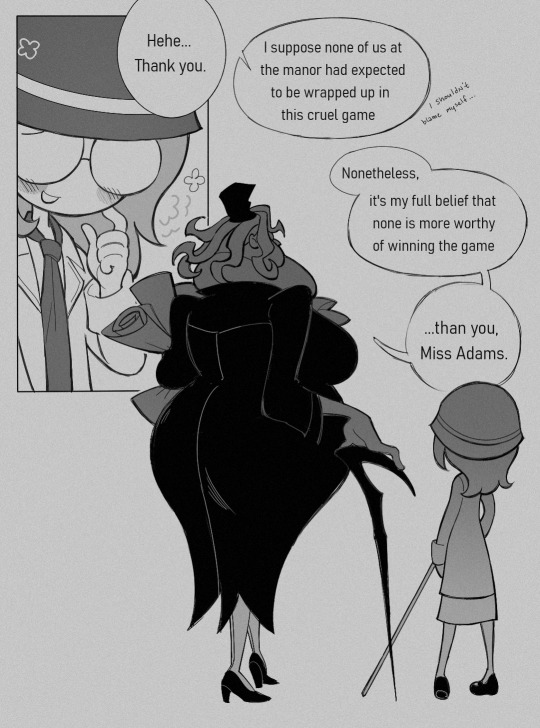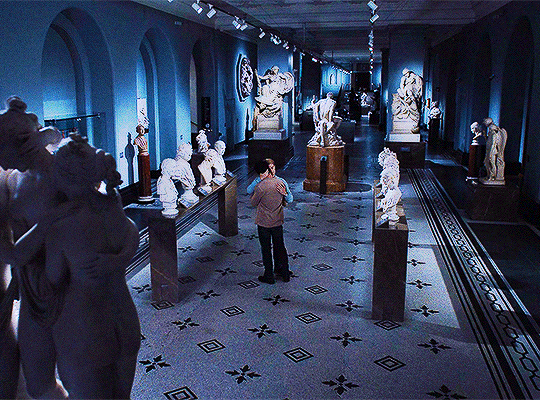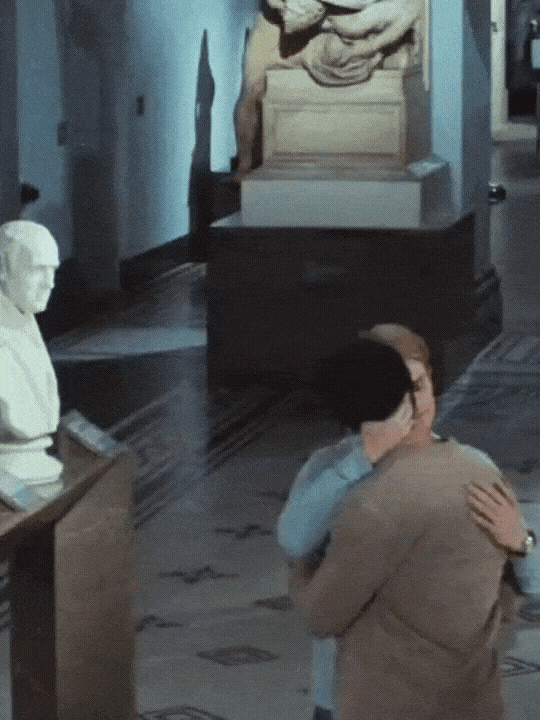#nicholas v
Text
In a brilliant essay, “Decolonial Theology and Changing the Global Church” on the Berkley Forum, Dr. Debora Tonelli says that “At the end of official colonialism, religion has often been the space in which colonized people have fought to build their new identity.” With regard to Indigenous nations and peoples, I would suggest a slight modification of that concept: “...the religion of the invaders has often been the space in which dominated and colonized peoples, those who have survived the intergenerational onslaught, have fought to build a new identity under an imposed system of domination.
My inspiration for that modification comes from a number of Vatican papal decrees issued by various popes during the fifteenth century (1436, 1452, 1454, 1455, 1456, 1481, 1493, 1506, and 1514). The Latin language of those documents is quite useful. It provides insight into the church-state coalition that served as an engine, so to speak, for establishing a system of domination over distant non-Christian lands during the so-called Age of Discovery.
Are the Papal Bulls Political Documents of Christian Empire?
While present-day Catholic Church experts tend to say that the language of those papal bulls is not part of official Church teaching, this is beside the point. Years ago, in 1992, Bishop (now Archbishop) Charles J. Chaput told me that the papal bulls I was referring to were “political documents.” I think he meant that they are not based on and do not express official church teachings.
I understand his use of the phrase “political documents” to mean that those papal decrees expressed the political intention of the popes of the Holy See, an intention to extend the system of domination of Western Christendom to distant lands in a spirit of “Christian empire” (Christiani imperii, in the Latin language of the bulls). This was to be accomplished by “reducing the barbarous nations” (ac barbarae nationes deprimantur) to subjection or domination.
The more egregious political language of those documents, going back to the Dum Diversas of 1452, expressed the directive to “invade, capture, vanquish, and subdue” non-Christians; “reduce their persons to perpetual slavery”; “take away all their possessions and property”; and “convert” the land, meaning to unlawfully or wrongfully take away that which belongs to another.
That kind of language provides us with the insight into what happens when free and independent nations and peoples have been invaded and deadly colonial patterns have been brutally imposed on them for generations, in the name of “the state” and Jesus. A resulting system of domination will then become “the space” within which Dr. Tonelli says that colonized people have fought to build “a new identity,” and within which they will perhaps “struggle for independence.”
However, this “new” identity will be a “colonized” rather than a liberated one. The colonized will then be working toward a form of independence under and subject to the imposed Christian European system of domination. Curiously, Dr. Tonelli’s account does not envision dominated (colonized) nations and peoples working to restore their original free and independent existence, by liberating themselves from the imposed system of Christian empire and domination.
Dominorum Christianorum: Christian Dominators
During a 2016 meeting with the Pontifical Council for Justice and Peace, I said to Archbishop Silvano Tomasi, “With respect, I believe there is much of your own history you don’t know. Let me ask you, have you ever actually read the papal bulls” from the fifteenth century? He replied, “No, I must confess.” The point being that most Catholics and even some of the highest Church officials have never studied the Latin language of those Church documents, and certainly not from an Original Nations or Indigenous peoples’ perspective.
A book published by the U.S. Library of Congress, just a few years ago, contains replicas of the papal bull of September 26, 1493, the Dudum Siquidem. That line is taken from the middle of the papal bull dated May 3, 1493, “que sub dominio actuali temporali aliquorum dominorum Christianorum constitute non essent.” This refers to lands discovered and to be discovered in the future “that were not established under the domination of any Christian dominators.”
Whether the intent of domination expressed by that language is part of “official Church teachings” is irrelevant in my view. What is relevant is that, throughout the world, the present-day context and conditions experienced by “Indigenous” nations and peoples is an outgrowth of the patterns of domination and dehumanization expressed in those many documents issued centuries ago by the Holy See.
In State of the World’s Indigenous People (2009), published by the Economic and Social Council of the United Nations, there is section titled “The Concept of Indigenous Peoples.” After saying that no specific definition has been “adopted by any United Nations-system body,” an example of a “working definition” is provided. It refers to “Indigenous communities, peoples and nations” which have “a historical continuity with pre-invasion and pre-colonial societies that developed on their territories.” Terms such as “pre-invasion” and “pre-colonial” suggests a post-invasion and post-colonial period, or, in other words, after the claim of a right of domination has been asserted and maintained.
Furthermore, the international working definition says that Indigenous peoples “consider themselves distinct from other sectors of the societies now prevailing on those territories, or parts of them,” which means “now dominating.” It also says that Indigenous communities, peoples, and nations “form at present non-dominant sectors of society...” The opposite of the non-dominant is the dominant, or the dominating states, which are the non-Indigenous. Despite these clear connections, the UN working definition never uses the word domination. Nor does it focus on the fact that the phrase “Indigenous peoples” is accurately interpreted as meaning “dominated peoples.”
Here’s one thing the Vatican papal bulls are able to teach us: Over a period of more than five centuries, a system of domination (the dominio of the dominorum Christianorum) was globalized by means of the language patterns found in the Vatican papal bulls of the fifteenth century.
That system now serves as the linguistic and behavioral “space” in which colonized Indigenous peoples, without being aware of it, have been working to build an identity as dominated peoples within the framework of the United Nations, which is an organization of “states” of domination. The question arises: How do we end the global system of domination and its devastating effects on the planet?
#What Fifteenth-Century Papal Bulls Can Teach Us About Indigenous Identity#white lies#catholic popes#who started slavery#catholic church#catholic pope nicholas v started slavery#nicholas v#dum diversas#Africans stolen for white lies#Africans enslaved for the catholics#Reparations#Reparations are due
3 notes
·
View notes
Text

i listen to fog lake too much
#falls through the ceiling with a mighty crash hello#it's been what...8 months?#I was too busy w uni and being mentally ill#thank u everyone so much for the tags on all prev posts.. i re-read them oaccasionally 💗#they make me v happy thank u for giving me a moment of ur time#that means so much#anyway! vashwood!!#i hate them so much#i want to eat them#i want to ugly cry#i want an ideal world where they could've had something for a little bit#im eating drywall and pacing around the room in a cold sweat#so trimax-atypical overt intimacy it is#more coming...in maybe another year#It's a big project!#to me. yeah#my dream is to be put in a terrarium for a while#if only u knew how many wips I have w vashwood..#maybe i'll get tired and pile them into one post all unfinished and no less ok for it yk#whatever u r doing doesn't need to be perfect to make someone happy#didn't u experience a positive little zap from my imperfect colored doodle rn?#what a speedrun of a drawing that was#(<spent 10h on it. that's the minimum for anything ever)#hope today is treating you well! so long stranger!#vashwood#vash the stampede#nicholas d wolfwood#trimax#trigun#tzarrz
3K notes
·
View notes
Text



🤍🤍 i've always loved the thought of helena being keigan's fave survivor, as she sees herself in her
girls go to college to get more knowledge
bonus:

2K notes
·
View notes
Text








"the handsomest-bodied man in all of England."
#mary and george#mary & george#maryandgeorgeedit#george villiers#perioddramaedit#nicholas galitzine#userninz#chrissiewatts#usersteen#usergayppl#usernuria#mine*#well yes actually!#does oliver hermanus know what he's done for us#hand picking nick for this role. i owe you everything sir.#this was just an excuse to gif george with his chest constantly out and thats okay#the 5th one wooahhhhh. they Knew what they were doing#still not over it#i need to live in that v neck. whatever#mary and george spoilers
2K notes
·
View notes
Text

keigan 😆❤️
#identity v#idv#id5#identity 5#idv keigan#keigan nicholas keogh#idv clerk#idv fanart#identity v fanart
662 notes
·
View notes
Text






Night shoots are wild at the Victoria & Albert Museum
#taylor zakhar perez#nicholas galitzine#rwrb movie#rwrbedit#rwrb bts#v&a#tzp#ng#the boys#*#gifs#my stuff
1K notes
·
View notes
Text



His mind flashes to Henry.
1 | 2
#red white and royal blue#rwrb#rwrbedit#firstprince#rwrb spoilers#alex claremont diaz#prince henry#lgbtq#filmedit#dailylgbtq#lgbtedit#*#alex x henry#book v movie#nicholas galitzine who told you you were allowed to make *that* face?? god#i'm pretty proud of this one ngl :')#there are many lines that arent iconic but means a lot to me#and that makes me stop and say wow casey so real#this is one of them#the one is when alex is watching henry 'create Prince Henry of Wales for the day.'
2K notes
·
View notes
Text

milly thompson the woman that you are
#trigun#carterrdraws#trigun maximum#my art#milly thompson#trigun milly#stun gun milly#millywood#nicholas d wolfwood#nicholas d. wolfwood#i just think they are v sweet#im so in love w both of them
1K notes
·
View notes
Text

hehe
486 notes
·
View notes
Text
Characters, book, and author names under the cut
Damianos (“Damen”) of Akielos/Laurent of Vere - Captive Prince by C.S. Pacat
Rhy Maresh/Alucard Emery - Shades of Magic by V. E. Schwab
Addam Saint Nicholas/Rune Saint John - The Tarot Sequence by K. D. Edwards
Neil Josten/Andrew Minyard - All For The Game by Nora Sakavic
#Lamen#Damianos of Akielos#Damen of Akielos#Laurent of Vere#Captive Prince#Capri#C.S. Pacat#Rhy Maresh#Alucard Emery#Shades of Magic#Shades of Magic Series#A Darker Shade of Magic#adsom#V. E. Schwab#Addam Saint Nicholas#Addam St Nicholas#Rune Saint John#Rune St John#The Tarot Sequence#The Hourglass Throne#tts#the last sun#tls#K. D. Edwards#Neil Josten#Andrew Minyard#All for the Game#Nora Sakavic#andriel#aftg
367 notes
·
View notes
Text
decided to redraw an old unfinished drawing of mine from 2023, took me 3 days with lots of breaks to finish it

2023 vs. 2024 close up


#volaeart#trigun#trigun maximum#nicholas d. wolfwood#art redraw#i think I’m overall happier with the newer drawing but there’s still things I need to work on#Esp the clothes and proportions but to be fair I haven’t drawn in 3 months so#Given that I draw v inconsistently I’d say this isn’t the worst#While drawing this I forgot how emo this mf looked with his scene emo ass haircut lmao#But anyways I just wanted to post smth to let people know I’m not dead
220 notes
·
View notes
Photo

found in vash’s coat pocket while doing laundry
#it's been 45 years since i've posted art on tumblr mb chief#trigun#trigun stampede#tristamp#wolfwood#nicholas d wolfwood#vashwood#trigun fanart#tristamp fanart#thanks to the vashwood big bang discord for critique help!!#v's art
2K notes
·
View notes
Photo







@shingansoul, Both. Both is Good :>
Que an image of Wolfwood squinting because of the amount of bright wholesome energy the these two would let off SDFLKSAJDFLKDSJGLSDGSD
I loved this idea so much blease Livio feels like the kinda guy who gives out hugs easily but also is a nervous rabbit about the safety of his friends ;;v;; He would adopt Vash as a second brother following Nico nii’s example of course :>
They seem like they’d make such sweet friends toooooooo ;;v;;
-NO ROMANCE INCLUDED-
#Trigun Stampede#Trigun Stampede Spoilers#Trigun stampede episode 6#Vash the Stampede#Livio the doublefang#Nicholas d Wolfwood#Vash Trigun Stampede#Livio Trigun Stampede#Wolfwood Trigun Stampede#Isa's fanart#insertsomthinawesome#May2023#isa doobles requests#shingansoul#And one extra doodle that has nothing to do with your request because I used it as a warm up asdfkLSJDLKSGJSLDGJSDLGJSDG#Livio has so much nervous bunny energy when he's a child blease#i feel like him and vash would bond very quickly and very easily#and wolfwood woudl be watching them like B>#he's not going to say he's happy about this tho asdfljSDLKGJSLDJGSDG he's just keeping it to himself#the first time I saw your request i lost my mind i thougth the idea was SO SWEET AND ADORABLE ;;v;;#aaaaaaand then i got carried away#I'd apologize but I doubt anybody is actually upset with me asdklfJSDLFKJSDGLSJDGD#the delaying of finishing this by about a week brought to you buy 'isa really didn't want to color anything that tuesday'#but honestly i'm super happy with how these turned out :D
3K notes
·
View notes
Text

who keeps touching my cipher machines im not mad i just wanna know
592 notes
·
View notes
Text






red white & royal blue ± george villiers references
I feel that James I, who fell madly in love with a very fit and exceptionally dim knight at a tilting match and immediately made him a gentleman of the bedchamber (a real title), would take mercy upon my particular plight.
#rwrb#red white and royal blue#mary & george#mary and george#rwrbedit#nicholas galitzine#userninz#usermegsb#usernuria#perioddramaedit#mine*#user artistic license for the v&a shot#pretend the statue is there#nick playing the person henry told alex all about is soooo crazy to me#like life really does come full circle#i have to bow down#in more ways than one................#i had to make a loose gifset on this lmao
2K notes
·
View notes
Text




Red white and royal blue (2023)
#rwrb#red white and royal blue#first prince#firstprince#museum#v&a museum#dance#dancing#taylor zakhar perez#alex claremont diaz#alexander claremont diaz#alexander gabriel claremont diaz#nicholas galitzine#nicholasgalitzine#nick galitzine#prince#henry#prince henry#henry fox#alex and henry#alex rwrb#henry rwrb#alex x henry#henry and alex#henry fox mountchristen windsor#henry hanover stuart fox#henry mountchristen windsor#henry prince of wales#henry prince of england#prince henry of wales
595 notes
·
View notes